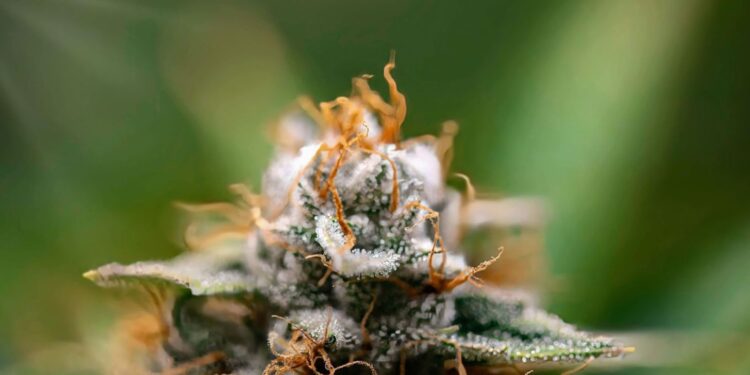For plenty of people, sleep is more of a myth than a nightly guarantee. Maybe your mind races just as the lights go out. Or you stare at the ceiling, waiting for rest that simply won’t arrive. If that sounds familiar, you’re not alone. Millions struggle with restless nights and the draining fatigue that follows. Over the last several years, natural sleep solutions have gotten a lot of attention, and among them, cannabis has become a surprising frontrunner. Curiosity has grown, along with new research and shifting attitudes. Can cannabis genuinely help you catch more sleep, or is it just another fleeting trend? Let’s break down what science and real users alike are discovering about cannabis and sleep, how to choose the right approach, and what it means for anyone tired of counting sheep.
Why People Are Turning to Cannabis for Sleep
Stress, inconsistent schedules, blue screens before bed—there’s no shortage of obstacles to deep, refreshing rest. Prescription options exist, but they often come with baggage: fogginess, dependency, or that “hungover” feeling the next morning. This is where cannabis enters the conversation. Cannabis interacts with the body’s endocannabinoid system, which plays a part in regulating sleep, mood, and more. Certain strains or cannabinoids may help shorten the time it takes to fall asleep, or help users stay asleep longer without as many interruptions. Whether you’re new to cannabis or seeking to fine-tune your approach for better sleep, professional guidance is invaluable. Reputable dispensaries like the Silverleaf Dispensary in New Jersey can make the process clearer and safer, offering support every step of the way. There’s a lot to consider, but the right advice can turn confusion into confidence.
What Does the Research Say About Cannabis and Sleep?
Research into cannabis and sleep isn’t brand new, but only recently has it moved out of the shadows and into more rigorous clinical settings. Studies have found that THC, the primary psychoactive compound in cannabis, might help users fall asleep more quickly. CBD, another prominent cannabinoid, is frequently linked to anxiety reduction, which can make it easier for the mind and body to unwind before bed.
Yet, the relationship isn’t straightforward. Some people report improvements in sleep duration, while others see changes in sleep cycles or find relief from issues like nightmares. According to recent data from the Sleep Foundation, around 70% young adults who consume cannabis casually do so to help them sleep. At the same time, it’s worth acknowledging that heavy, long-term use, especially of high-THC varieties, can come with its own risks, such as dependence or altered sleep architecture. Science is catching up, but personal experience still matters. Finding the right approach takes some trial and error.
Choosing the Right Cannabis Product for Better Rest
Walking into a dispensary can be overwhelming if you’re unprepared. Shelves lined with products such as flowers, edibles, tinctures, and vapes all promise something slightly different. Where do you start?
First, think about delivery. Inhaled options, such as vaporized flower, tend to act quickly, which is useful for those who want rapid relief when they hit the pillow. Edibles and tinctures, on the other hand, offer a slower, more sustained effect, making them well-suited for people who tend to wake during the night. Strain selection matters, too. Indica-dominant strains have a longstanding reputation for their relaxing, body-heavy effects, while sativa varieties are more commonly associated with alertness. It’s not always that simple, though. What truly defines a strain’s effect is its unique blend of cannabinoids and terpenes. For example, myrcene and linalool are terpenes often credited with calming, soothing qualities. On the other hand, the role of THC gummies in pain relief cannot be ignored when people cannot sleep due to pain. Start small, always. Dosage can make or break your experience, and what works for one person might be overwhelming for another. Consider journaling your sleep, tracking products, timing, and how you feel in the morning. This kind of personal log makes it easier to pinpoint what’s truly helpful.
Building a Bedtime Routine: Cannabis and Sleep Hygiene
No single plant, supplement, or pill is likely to solve sleep problems in isolation. The most sustainable improvements come from combining healthy habits with supportive tools like cannabis. Set a bedtime. Keep it consistent, even on weekends. Turn off screens an hour before you plan to rest. Dim the lights, use blackout curtains if you’re sensitive to streetlamps or moonlight, and experiment with relaxation techniques. Breathing exercises, meditation, or gentle stretches can help prepare both body and mind for sleep.
Adding cannabis into this mix can become a ritual, not a crutch. Try incorporating mindfulness practices alongside your chosen product. A checklist for an effective routine:
- Aim for the same bedtime every night
- Power down electronics and switch to low lighting
- Choose your preferred method of cannabis consumption, with attention to timing
- Pair with a calming activity: reading, light yoga, meditation
- Track what works and what doesn’t
Safety, Support, and Personalization
While cannabis is widely considered safe for most adults, it’s not a one-size-fits-all solution. Individual reactions vary, and factors like medication interactions or underlying conditions need to be taken into account. Daytime drowsiness, changes in dream recall, or even mild grogginess the next morning may be experienced, especially when experimenting with higher doses.
Product quality can’t be overstated. Always seek out lab-tested options, and don’t hesitate to ask for a certificate of analysis. Professional staff are trained to help you navigate these choices. At a trusted dispensary, you can expect to find people who are knowledgeable about the latest products, effects, and responsible use. If you’re unsure where to start or how to adjust, don’t be shy about asking for support. Reputable providers prioritize education and safety, guiding you through the process of selecting and fine-tuning a regimen that aligns with your goals. The growing research on cannabis extends beyond human applications. CBD is also showing promise in supporting pet health, including using CBD for dogs’ joint health.
Rest Is Within Reach
A good night’s sleep is never out of style. While there are no silver bullets, cannabis is making a real difference for people who struggle to find rest. By taking a thoughtful, individualized approach—pairing science, supportive routines, and trustworthy guidance—it’s possible to discover new ways to reclaim the rest you deserve.














Discussion about this post